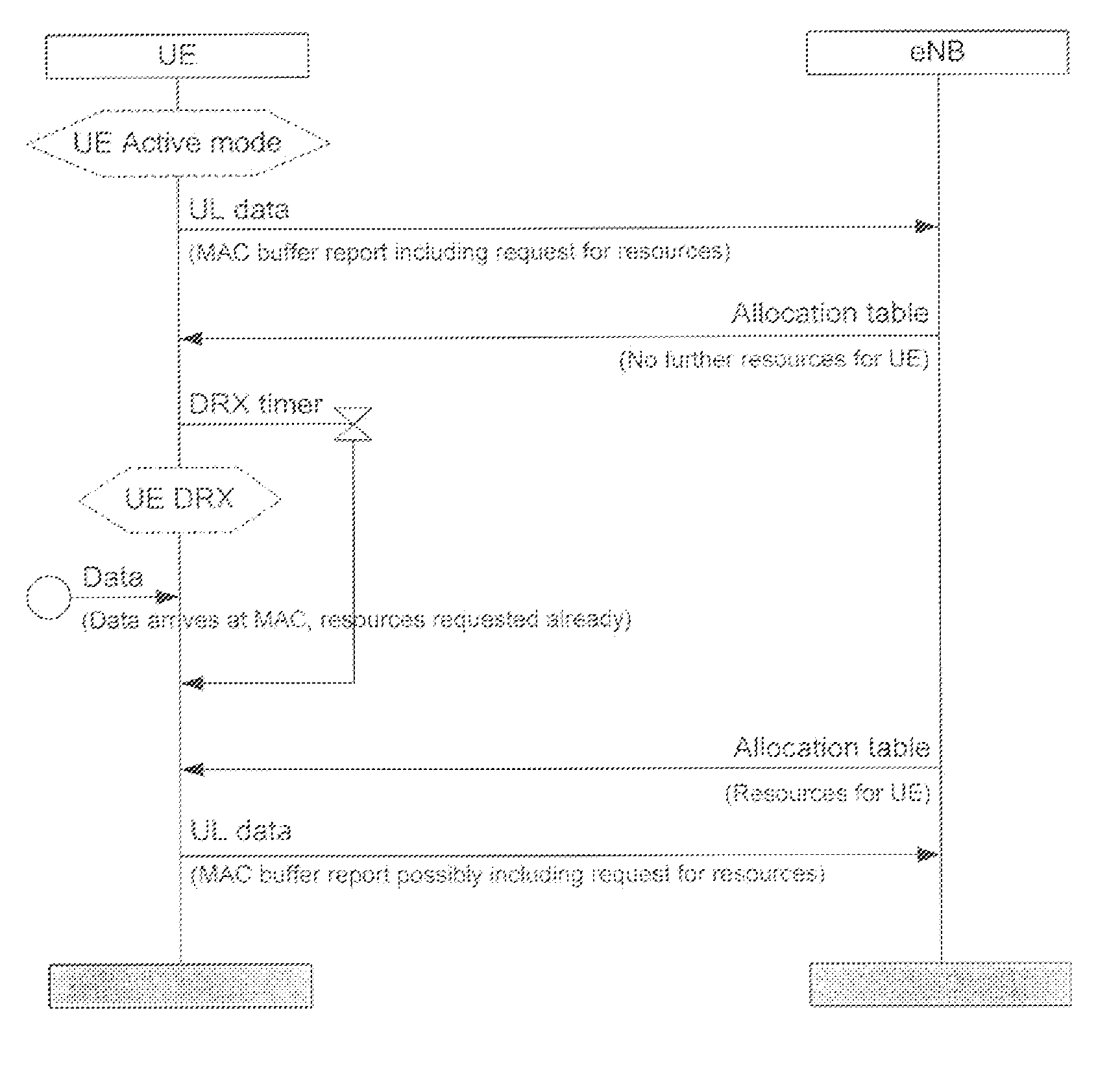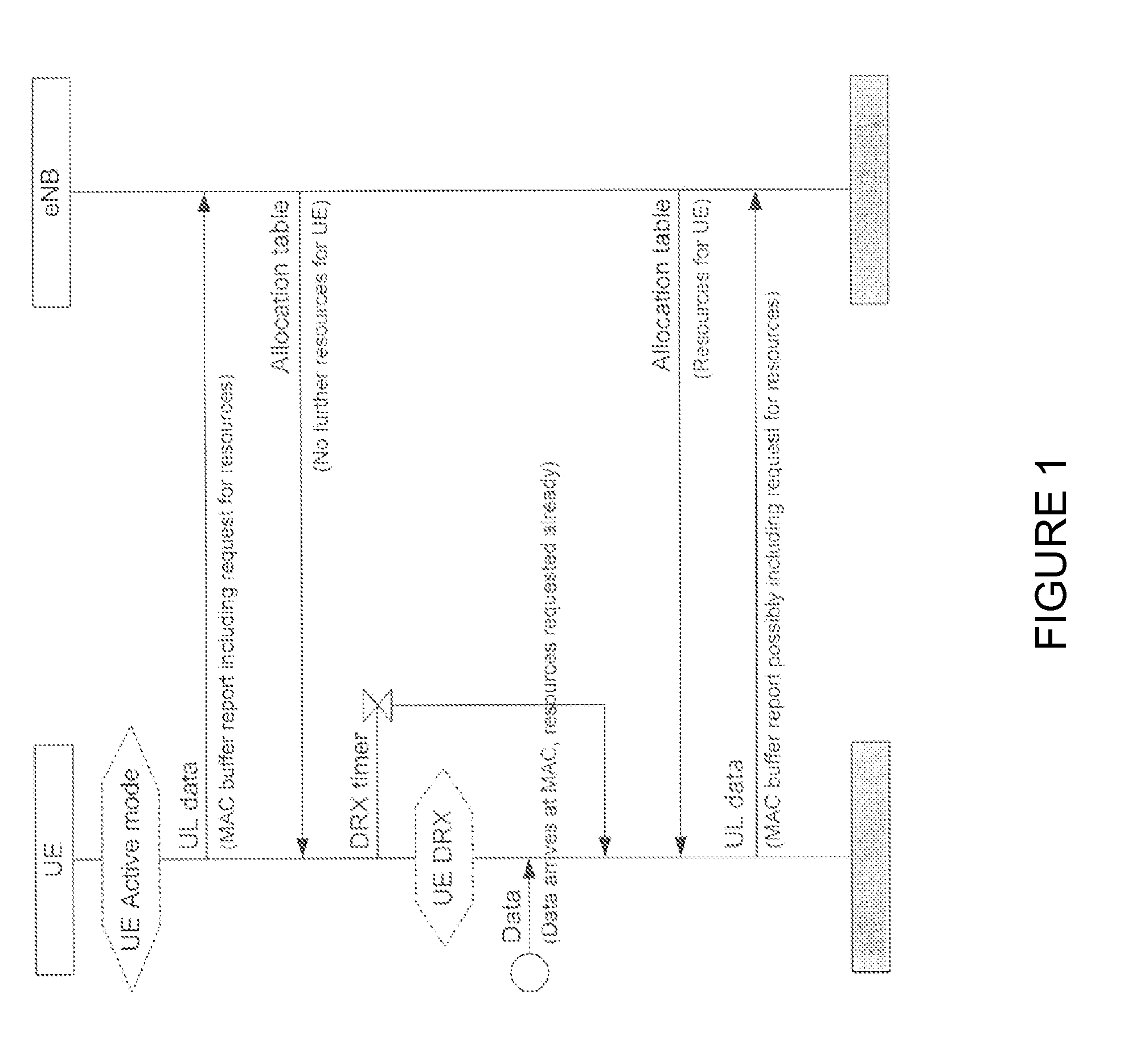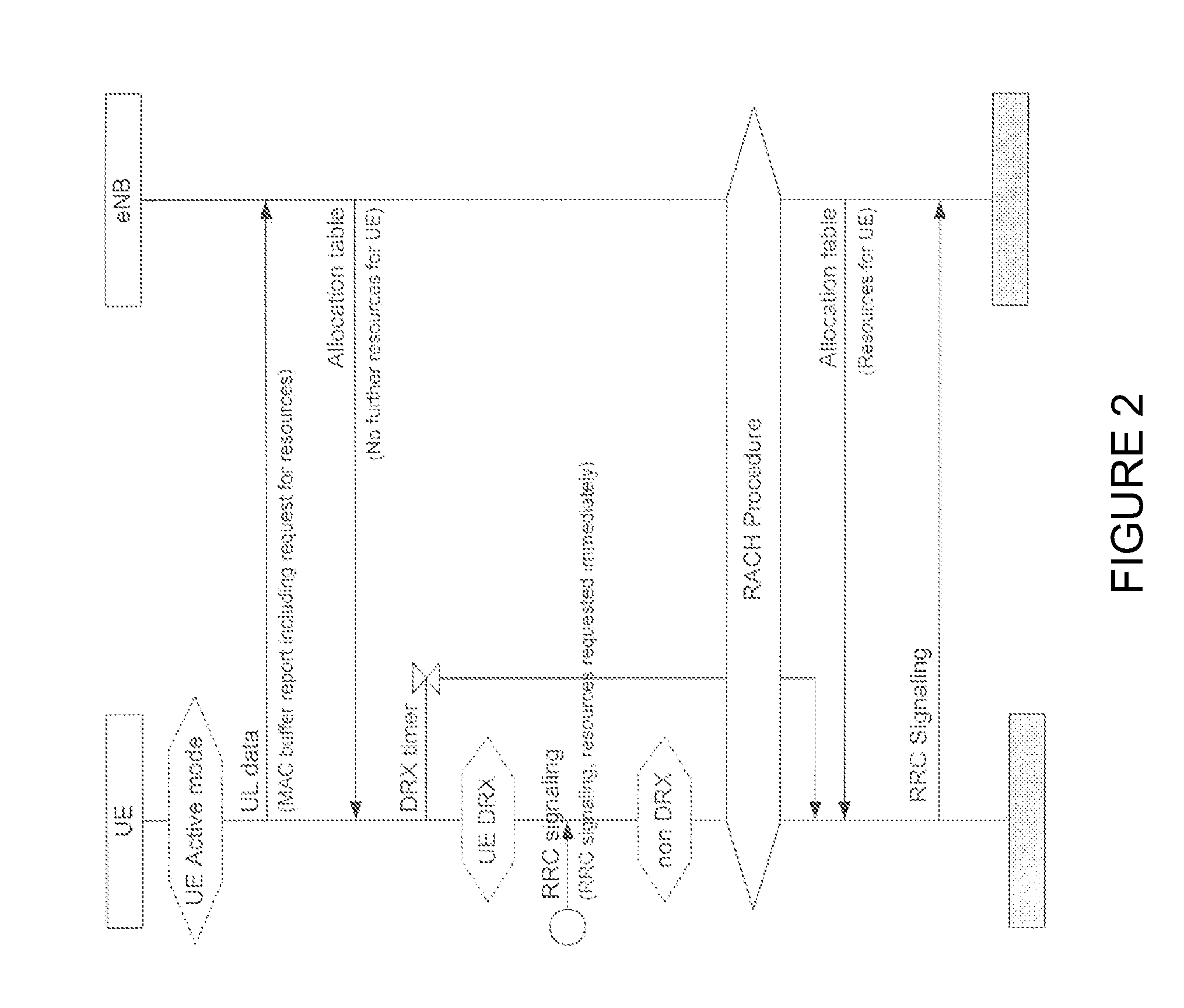System and method for requesting uplink resources in a communication system
a communication system and resource request technology, applied in the field of data transmission in communication systems, can solve the problems of insufficient transmission speed, inability to accept user equipment or communication system use, and inability to know if the user equipment is suitable for use,
- Summary
- Abstract
- Description
- Claims
- Application Information
AI Technical Summary
Benefits of technology
Problems solved by technology
Method used
Image
Examples
Embodiment Construction
[0022]The making and using of the presently preferred embodiments are discussed in detail below. It should be appreciated, however, that the present invention provides many applicable inventive concepts that can be embodied in a wide variety of specific contexts. The specific embodiments discussed are merely illustrative of specific ways to make and use the invention, and do not limit the scope of the invention.
[0023]In view of the foregoing, the present invention will be described with respect to exemplary embodiments in a specific context of a system and method for determining whether a user equipment should use a RACH procedure to request uplink resources in the LTE_Active mode (or the like). An embodiment of the present invention also provides a system and method for a base station to determine if a RACH request for uplink resources from the user equipment should be answered with a grant of resource allocation or should be put “on hold.” In this section, conditions are described...
PUM
 Login to View More
Login to View More Abstract
Description
Claims
Application Information
 Login to View More
Login to View More - R&D
- Intellectual Property
- Life Sciences
- Materials
- Tech Scout
- Unparalleled Data Quality
- Higher Quality Content
- 60% Fewer Hallucinations
Browse by: Latest US Patents, China's latest patents, Technical Efficacy Thesaurus, Application Domain, Technology Topic, Popular Technical Reports.
© 2025 PatSnap. All rights reserved.Legal|Privacy policy|Modern Slavery Act Transparency Statement|Sitemap|About US| Contact US: help@patsnap.com



